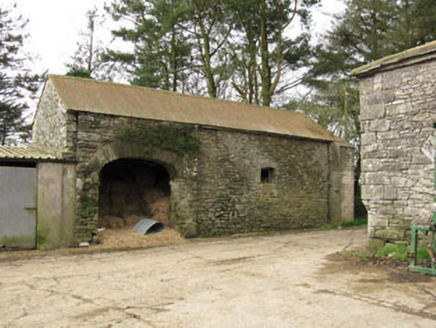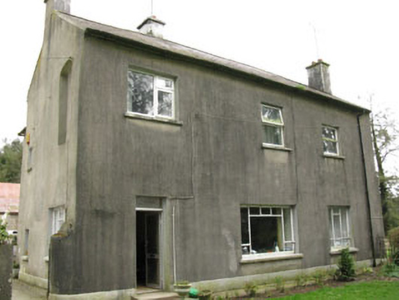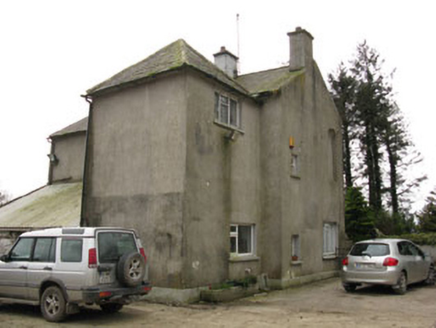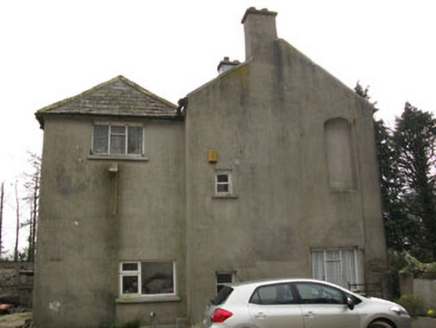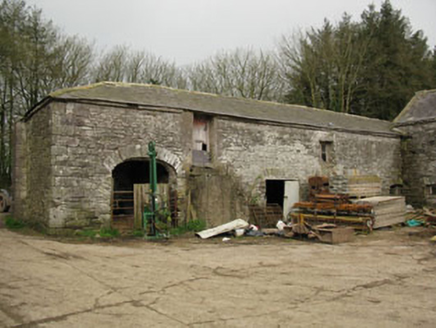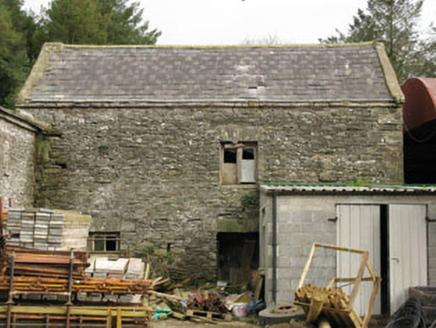Survey Data
Reg No
20905103
Rating
Regional
Categories of Special Interest
Archaeological, Architectural, Historical, Social
Original Use
House
In Use As
House
Date
1680 - 1720
Coordinates
156297, 84038
Date Recorded
07/04/2009
Date Updated
--/--/--
Description
Detached three-bay two-storey house, built c.1700, having two-storey return and lean-to addition to rear (north). Pitched slate roof to main building with hipped slate roof to return, having rendered chimneystacks and cast-iron rainwater goods. Rendered walls with plinth. Square-headed window openings with rendered sills and replacement timber casement windows. Blind niche to first floor west elevation. Square-headed door opening with recent glazed timber door. Farmyard to west with single and two-storey buildings having pitched and hipped slate roofs. Corrugated-iron roof to southern block. Rubble limestone walls with roughly dressed quoins. Segmental-headed carriageway openings with dressed voussoirs to western block. Square-headed openings to northern block with remains of timber fittings. Square-profile rendered piers and splayed retaining walls to front entrance. Set within own grounds.
Appraisal
A complex and fascinating building, which though substantially altered, nonetheless retains much of its historic character. Possibly originally a tower house, it was modified over the centuries to accommodate changes in domestic design. The internal doors have segmental arches and the extremely thick east gable are features which indicate an early date. The first edition Ordnance Survey map of 1842 shows square-plan blocks flanking the south elevation, which no longer survive, and other alterations to the fabric suggest that the building was once substantially larger. A historical source states that it was castellated into the early nineteenth century. The house has been connected with two members of the Davis family, Dean Rowland Davis in the 1690s and James Davis in the nineteenth century. It was used as an RIC barracks in the late nineteenth century.
